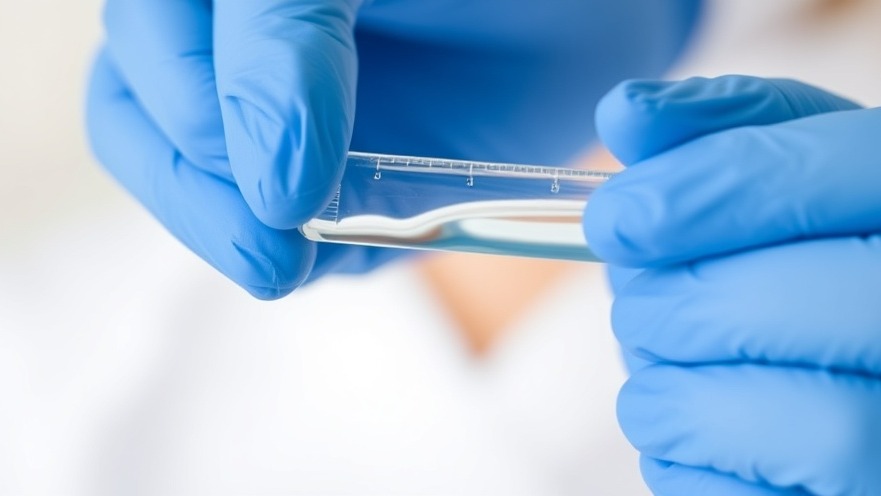
Revolutionizing Patient Monitoring: The Shift from Blood to Sweat and Saliva Testing
As technology continues to evolve, so too does the landscape of patient monitoring. Many health practitioners often rely on traditional blood sampling to assess a patient's condition, but what if we could replace that with a less invasive method? Recent research led by Eindhoven University of Technology's Sophie Adelaars explores just that, focusing on biomarkers present in sweat and saliva. This innovative approach could redefine the medical protocols for continuous patient monitoring, aligning with the growing trend towards patient-centric healthcare solutions.
Understanding Sweat Testing: A New Frontier in Biomarkers
Adelaars and her team have explored how sweat can serve as a potential medium for monitoring health. Utilizing pilocarpine to stimulate sweat glands, they are able to collect fluid that contains various biomarkers. This technique not only promises less discomfort for patients but also allows for ongoing and remote health evaluations. “This method can offer great advantages over traditional blood sampling, as it’s less invasive and doesn’t require medical personnel for collection,” reflects Adelaars, emphasizing the efficiency of continuous monitoring.
Current Practices and the Need for Innovation
While the concept of sweat testing isn’t new – it has previously been employed to track conditions like cystic fibrosis in infants – its full potential remains largely untapped in clinical settings today. The primary challenges lie in the limited understanding of sweat's composition and its implications for various health conditions. Current medical practices rely heavily on blood tests, pointing to a significant gap in utilizing sweat as a diagnostic tool. The research led by Adelaars aims to bridge this gap, making a compelling case for an evolution in medical testing methods.
The Potential of Saliva Testing: Convenience with Caution
Saliva is another bodily fluid that has emerged as a viable alternative to blood sampling. It offers the advantage of ease of collection, but certain factors such as food intake and oral hygiene must be managed carefully to ensure accurate results. Adelaars established protocols for patients to minimize external influences on saliva composition before testing. In a clinical setting, this planning is essential to ensure that the readings obtained reflect actual health markers, thus enhancing the reliability of saliva testing.
Long-Term Outlook: What This Means for Healthcare Practitioners
The implications of adopting sweat and saliva testing in patient monitoring are profound. For concierge health practitioners, this shift could lead to substantial changes in how patient assessments are conducted. Continuous monitoring through non-invasive means not only improves patient comfort but could also enhance engagement and adherence to health protocols. Practitioners might soon need to reconsider their diagnostic tools and adopt these alternative testing methods to stay ahead in an evolving healthcare landscape.
Challenges Ahead: Regulatory Hurdles and Public Acceptance
Despite the promise of these new testing methods, hurdles remain, especially regarding regulatory approvals and public acceptance. The medical community needs to assure patients of the reliability and accuracy of these alternative biomarker measurements. Highlighting successful trials and gradually integrating these tools into everyday practice will be essential for fostering trust and confidence.
Final Thoughts: Embracing a New Era in Patient Care
Ultimately, the innovation surrounding sweat and saliva testing heralds a new era in patient monitoring—one characterized by increased comfort, convenience, and continuity of care. As the healthcare sector pivots towards personalized and technology-driven solutions, adopting these alternatives can significantly enhance patient experiences and outcomes.
As a concierge health practitioner, staying informed on such advances is crucial. Not only will it allow you to offer state-of-the-art care to your patients, but it will also position you as a forward-thinking leader in an ever-evolving health landscape. Encourage discussions about these options with your patients and explore how they can be incorporated into your practice for better health management.
 Add Row
Add Row  Add
Add 






Write A Comment